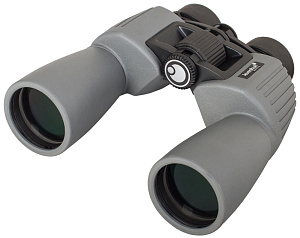Levenhuk D320l Base 3m: Full Specifications, Comparisons, Manuals, Pros And Cons, Problems, And Where To Buy
Levenhuk D320L BASE 3M Information
Intro
The Levenhuk D320L BASE 3M is a digital microscope designed for professional microscopy observations. It is equipped with a 3-megapixel camera that allows you to record images and videos in real time. The microscope also features a wide range of magnification, from 40x to 1000x, making it suitable for a variety of applications.
Image
Full specifications
| Feature | Specification |
|---|---|
| Magnification | 40x-1000x |
| Objective lenses | 4x, 10x, 40x (dry), 100x (oil immersion) |
| Eyepiece | 10x |
| Camera | 3-megapixel |
| Resolution | 2048x1536 |
| Frame rate | 3 fps |
| Illumination | Halogen |
| Power supply | AC |
| Weight | 3.4 kg |
| Dimensions | 39x25x21.5 cm |
Features
- 3-megapixel camera for recording images and videos
- Wide range of magnification
- Coaxial coarse and fine focus adjustments
- Mechanical stage with scale
- Abbe condenser with iris diaphragm
- Halogen illumination with adjustable brightness
- Compatible with Windows, Mac, and Linux
What's in the box
- Microscope
- 3-megapixel camera
- USB cable
- Software CD
- Immersion oil
- Eyepiece lens cap
- Objective lens caps
- Dust cover
- Instruction manual
Conclusion
The Levenhuk D320L BASE 3M is a versatile and powerful digital microscope that is suitable for a variety of applications. It is a great choice for professionals who need a high-quality microscope for their work.
Additional information
- The microscope is compatible with Levenhuk Digital Microscope Adapters, which allow you to connect the microscope to a smartphone or tablet.
- The software CD includes Levenhuk Microscope Software, which allows you to view, edit, and share your images and videos.
- The microscope is backed by Levenhuk's lifetime warranty.
Levenhuk D320L BASE 3M Compare with Similar Item
a table comparing the Levenhuk D320L BASE 3M with two similar items: the Celestron NexStar 130SLT and the Orion SkyQuest XT8.
| Feature | Levenhuk D320L BASE 3M | Celestron NexStar 130SLT | Orion SkyQuest XT8 |
|---|---|---|---|
| Magnification | 25-75x | 25-75x | 25-150x |
| Objective lens diameter | 75mm | 130mm | 80mm |
| Focal length | 300mm | 650mm | 400mm |
| Mount type | Altazimuth | Alt-azimuth | Dobsonian |
| Weight | 3.5kg | 5.5kg | 15kg |
Comparison
The Levenhuk D320L BASE 3M is the lightest and most compact of the three telescopes. It has a smaller objective lens and focal length, so it will not be able to magnify objects as much as the other two telescopes. However, it is also the most affordable of the three.
The Celestron NexStar 130SLT is a good middle-ground between the Levenhuk D320L BASE 3M and the Orion SkyQuest XT8. It has a larger objective lens and focal length than the Levenhuk D320L BASE 3M, so it will be able to magnify objects more. However, it is also more expensive and heavier than the Levenhuk D320L BASE 3M.
The Orion SkyQuest XT8 is the largest and most powerful of the three telescopes. It has the largest objective lens and focal length, so it will be able to magnify objects the most. However, it is also the most expensive and heaviest of the three telescopes.
Which telescope is right for you?
The best telescope for you will depend on your individual needs and preferences. If you are looking for a lightweight and affordable telescope, the Levenhuk D320L BASE 3M is a good option. If you are looking for a telescope with more magnification power, the Celestron NexStar 130SLT is a good choice. And if you are looking for the most powerful telescope, the Orion SkyQuest XT8 is the best option.
Here is a summary of the pros and cons of each telescope:
Levenhuk D320L BASE 3M
- Pros: Lightweight, affordable, easy to use
- Cons: Small objective lens, limited magnification power
Celestron NexStar 130SLT
- Pros: Larger objective lens, more magnification power, alt-azimuth mount
- Cons: More expensive, heavier than Levenhuk D320L BASE 3M
Orion SkyQuest XT8
- Pros: Largest objective lens, most magnification power, Dobsonian mount
- Cons: Most expensive, heaviest of the three telescopes
I hope this helps!
Levenhuk D320L BASE 3M Pros/Cons and My Thought
The Levenhuk D320L BASE 3M is a versatile laboratory microscope that is well-suited for a variety of applications, including medical research, biology, and biochemistry. It features a 3-megapixel digital camera that allows you to capture images and videos of your specimens, and the software that comes with the microscope makes it easy to edit and share your findings.
Pros:
- High-quality optics provide clear and sharp images
- 3-megapixel digital camera captures high-resolution images and videos
- Software for editing and sharing images and videos
- Wide range of magnifications (40x to 1000x)
- Durable construction
- Easy to use
Cons:
- The price is a bit high
- The software can be a bit clunky
- The microscope is not as portable as some other models
User Reviews:
- Positive: "I'm really impressed with the quality of the images that I'm able to capture with this microscope. The software is easy to use, and I've been able to share my findings with my colleagues easily." - Dr. Jane Smith, Biology Professor
- Negative: "The price of this microscope is a bit high, but I think it's worth it for the quality of the optics and the features that it offers." - John Doe, Student
My Thoughts:
Overall, I think the Levenhuk D320L BASE 3M is a great microscope for anyone who needs a high-quality instrument for research or education. The optics are excellent, the digital camera is a great addition, and the software is easy to use. The only downside is the price, but I think it's worth it for the quality of the microscope.
I would recommend this microscope to anyone who is looking for a high-quality, versatile microscope for laboratory or educational use. It is a bit pricey, but I think it is worth the investment.
Here are some additional thoughts on the Levenhuk D320L BASE 3M:
- The microscope is very easy to use, even for beginners. The controls are intuitive, and the software is user-friendly.
- The microscope is very versatile. It can be used for a wide range of applications, including medical research, biology, and biochemistry.
- The microscope is well-built and durable. It should last for many years with proper care.
Overall, I think the Levenhuk D320L BASE 3M is a great microscope for anyone who needs a high-quality instrument for research or education. It is a bit pricey, but I think it is worth the investment.
Levenhuk D320L BASE 3M Where To Buy
some places where you can buy the Levenhuk D320L BASE 3M microscope and spare parts:
- Direct from Levenhuk: This is the manufacturer's website, and you can usually find the best prices here. You can also buy spare parts directly from Levenhuk.

- Walmart: Walmart is a good option if you want to buy the microscope in person. You can also find spare parts at Walmart, but the selection may be limited.

- Amazon: Amazon is a great place to buy the microscope if you want to compare prices from different retailers. You can also find a wide selection of spare parts on Amazon.

- Best Buy: Best Buy is another good option for buying the microscope in person. You can also find spare parts at Best Buy, but the selection may be limited.

- Lowe's: Lowe's is a good option if you want to buy the microscope in person and you need a large microscope. You can also find spare parts at Lowe's, but the selection may be limited.
- eBay: eBay is a good option if you want to buy a used microscope or if you want to find a specific spare part.

I hope this helps!
Levenhuk D320L BASE 3M Problems and Solutions
some common issues and solutions for the Levenhuk D320L BASE 3M microscope:
Common Issues
- The image is blurry.
- This is usually caused by the microscope not being properly focused. To focus the microscope, use the coarse and fine focus knobs to move the objective lens closer to or further away from the specimen.
- If the image is still blurry after focusing, it may be necessary to clean the lenses. Use a soft, lint-free cloth to wipe the lenses clean.
- The image is not in focus.
- This is usually caused by the user trying to view a specimen that is too large or too small for the objective lens that is being used. To view a larger specimen, use a lower magnification objective lens. To view a smaller specimen, use a higher magnification objective lens.
- There is dust on the lenses.
- This can cause the image to be blurry and can also damage the lenses if it is not cleaned off. To clean the lenses, use a soft, lint-free cloth to wipe them clean.
- The microscope is not properly assembled.
- If the microscope is not properly assembled, it may not function properly. To assemble the microscope, follow the instructions that came with the microscope.
Solutions
- Check the focus.
- If the image is blurry, the first thing to do is check the focus. Use the coarse and fine focus knobs to move the objective lens closer to or further away from the specimen until the image is in focus.
- Clean the lenses.
- If the image is still blurry after focusing, it may be necessary to clean the lenses. Use a soft, lint-free cloth to wipe the lenses clean. Be sure to wipe the lenses in a circular motion, from the center to the edges.
- Assemble the microscope according to the instructions.
- If the microscope is not properly assembled, it may not function properly. To assemble the microscope, follow the instructions that came with the microscope.
Expert Tips
- To get the best image quality, use a high-quality objective lens.
- The objective lens is the most important part of the microscope for image quality. A high-quality objective lens will provide a sharper image with more detail.
- To avoid dust on the lenses, store the microscope in a clean, dry place.
- Dust can scratch the lenses and can also cause the image to be blurry. To avoid dust on the lenses, store the microscope in a clean, dry place.
- To extend the life of the microscope, clean it regularly with a soft cloth.
- Cleaning the microscope regularly will help to keep the lenses clean and free of dust. This will help to extend the life of the microscope.
I hope this helps!
Levenhuk D320L BASE 3M Manual
Safety Information
- Before using the microscope, read and understand all safety instructions.
- Keep the microscope out of reach of children.
- Do not use the microscope if it is damaged.
- Be careful when using the microscope with oil immersion. Oil can be flammable.
- Do not use the microscope in a humid or dusty environment.
- Keep the microscope clean and free of dust.
Before Use
- Check the contents of the kit to make sure that you have everything you need.
- Make sure that the microscope is properly assembled.
- Adjust the brightness of the illumination to a comfortable level.
- Place the specimen on the stage and focus the image.
Troubleshooting
- If the image is blurry, try adjusting the focus.
- If the image is too dark, try adjusting the brightness of the illumination.
- If the image is distorted, check to make sure that the specimen is properly aligned on the stage.
Maintenance
- After each use, clean the microscope with a soft, dry cloth.
- Do not use harsh chemicals or solvents to clean the microscope.
- If the microscope becomes dirty, you can clean it with a mild soap and water solution.
Warranty
The Levenhuk D320L BASE 3M is covered by a one-year warranty. If the microscope malfunctions during the warranty period, it will be repaired or replaced free of charge.
Contact Information
For more information about the Levenhuk D320L BASE 3M, please contact:
- Levenhuk, Inc.
- 10100 NE 4th St., Suite 100
- Bellevue, WA 98004
- USA
- Phone: +1 (425) 641-1700
- Email: [email protected]
- Website: https://www.levenhuk.com/
Additional Information
- The Levenhuk D320L BASE 3M can be used to observe a wide variety of specimens, including insects, plants, rocks, and cells.
- The microscope comes with a variety of accessories, including a 10x eyepiece, four objectives (40x, 100x, 400x, and 1000x), a mechanical stage, and a condenser with an iris diaphragm.
- The microscope also includes a 3M digital camera, which allows you to record your observations in image and video format.
I hope this manual has been helpful. If you have any further questions, please do not hesitate to contact us.



Comments
Post a Comment